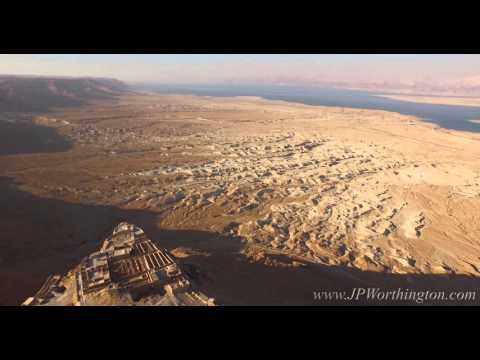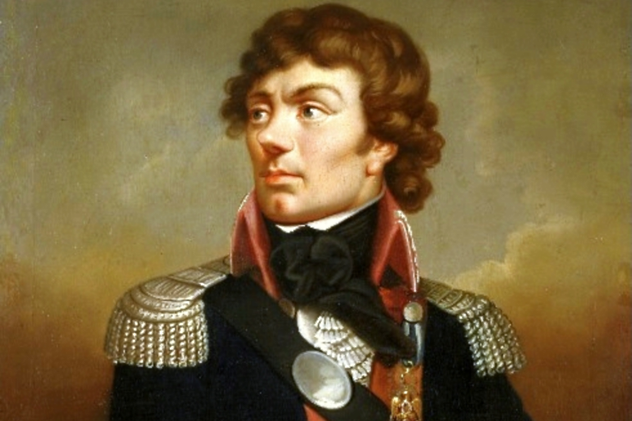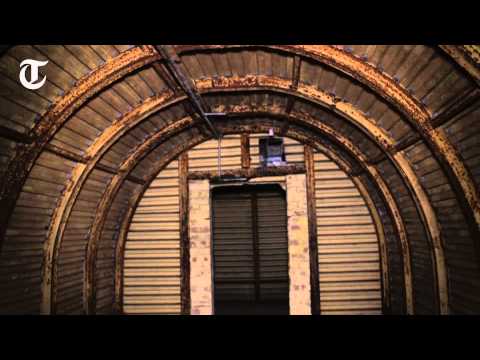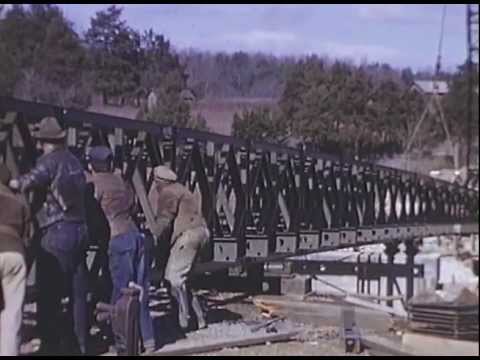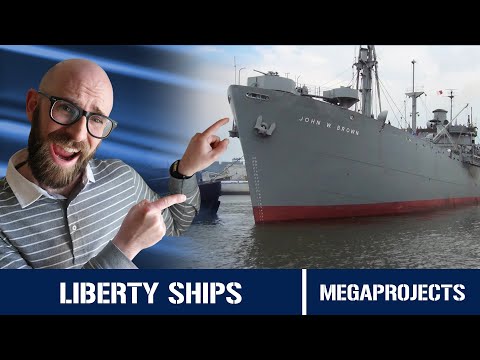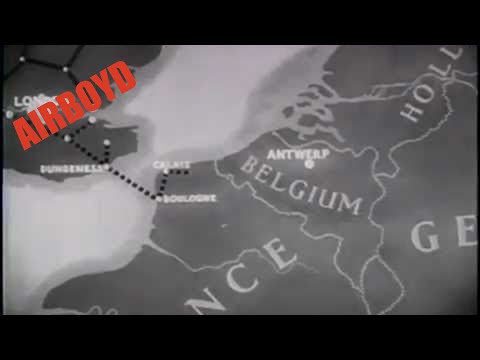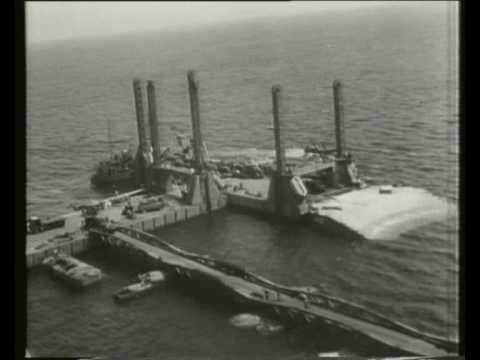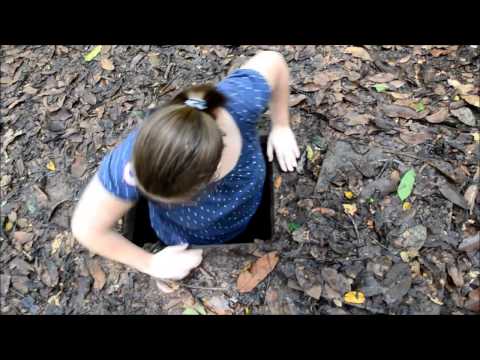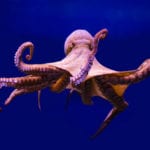10 The Siege Ramp At Masada
High atop a rocky plateau in the Judean desert, 500 meters (1,500 ft) above the Dead Sea, the fortress of Masada frowned down upon any would-be invader. Here, after the fall of Jerusalem and the destruction of the Temple by the Romans in AD 70, a band of Zealots fled to continue the Jewish rebellion. For three years, they defied the besieging Romans. The 10th Legion under Flavius Silva tried to starve the rebels. It didn’t work, so the Romans tried every siege technique they knew to capture the mountain. Silva knew he had to get creative. Silva took advantage of a specific geographical feature of Masada—a natural spur on the mountain’s west side. Upon this spur, the Romans began to pile up earth and debris. Soon, the defenders of Masada beheld a gigantic ramp was beginning to reach up to their walls. It appears that the Romans forced thousands of Jews to work on the ramp, as the defenders above would not shoot their own countrymen. The Zealots watched helplessly as the ramp ascended higher and higher. Near the summit, the Romans erected a stone platform and wheeled a battering ram onto it. The ram broke through the wall, and the infantry that had followed the machine up the ramp poured into Masada to be greeted by . . . silence. All but seven of the 967 men, women, and children in the fortress had chosen to commit mass suicide and die free rather than surrender to Roman slavery.
9 Kosciuszko’s Defense Of West Point
During the Revolutionary War, Polish engineer Tadeusz Kosciuszko erected a series of fortifications that stumped the British and denied them the Hudson Valley, the control of which would have effectively divided the colonial forces in two. The place was West Point, today the home of the United States Military Academy. Kosciuszko came to America to offer his services to the Continental Army and became colonel of engineers in 1776 under General Horatio Gates. It was his defenses atop Bemis Heights that largely contributed to the pivotal American victory at Saratoga in 1777. Six months later, General George Washington assigned Kosciuszko to fortify the heights at a strategic bend in the Hudson River. West Point, gateway to the Hudson Valley, had to be kept out of British hands. West Point was state-of-the-art at the time, utilizing the concept of mutually supporting strongpoints instead of the single positions common in the 18th century. The main citadel was a polygonal structure on a rock face 60 meters (200 ft) above the river, giving it a commanding view. It was ringed by four additional forts, with seven redoubts in between. It had bombproof shelters and magazine storage. A 60-ton chain with links 0.6 meters (2 ft) long was strung across the Hudson as a barrier against British ships. Construction was a logistical nightmare. Kosciuszko complained of lack of manpower, and Washington duly sent over 2,500 men. Then came the problems of clothing, provisions, and pay for the laborers, as well as the inevitable disputes. The winter of 1779–80 was especially severe. Labor dwindled, and deep snow slowed construction to a crawl. A three-day fire required the north redoubt to be built all over again. When spring came, Kosciuszko built himself a small garden where he could be alone in meditation. When finished, the entire complex, manned by 2,500 men, was deemed impregnable. It could not be breached without knowledge of its structure. A general noted, “Kosciuszko’s merit lies in this, that he gave the fortifications such strength that they frightened the very enemy from all temptations of even trying to take the Highlands.” It was this fact that made a traitor out of Benedict Arnold. Having been made commander of West Point, Arnold proposed handing over its secrets to the British. But his emissary, Major John Andre, was captured and executed and Arnold himself forever disgraced. West Point remained unconquered and became the standard for fortification practice in the army.
8 Defenses Of Washington
At the outbreak of the Civil War, Washington, DC, was virtually exposed to any determined Confederate attack to capture the capital. Only a lone fort 19 kilometers (12 mi) to the south stood in the way of the White House lawn becoming a Confederate encampment. The fort in question had no effective armament and was commanded by a drunken ordnance sergeant. With enemy territory just across the Potomac River, the Union was obligated to tie down an army, that might otherwise be used in other operations, to defend the city. The Union government needed to act fast to remedy the situation. Chief engineer General John Gross Barnard took on the daunting assignment of protecting Washington with a fortification system. Beginning in May 1861, a rudimentary series of forts had sprung up, though they weren’t connected in any systematic way. It assuaged President Abraham Lincoln’s paranoia somewhat. He had to battle his own generals, who were reluctant to spend meager resources on static defenses and believed instead in offensive maneuvers. After only a few weeks of hurried construction, the fortifications were already facing a rebel force that had previously beaten the Army of the Potomac at Manassas Junction. Fortunately, the Confederates mistakenly thought the defenses impregnable and held back. The defenses continued to be improved and strengthened throughout the war. At any one time, 15 engineering officers supervised a motley labor force of whites, blacks, soldiers, and civilians. By 1862, there were 37 forts; by 1865, there were 68, all within a 59-kilometer (37 mi) perimeter. They were armed with 807 mounted cannons, 93 mortars, and 401 field gun emplacements. These were connected by 30 kilometers (20 mi) of rifle trenches and blockhouses. Contact with a central command was maintained by miles of roads and telegraph lines. Washington had become the most heavily fortified city in North America, if not the world. The greatest acid test of the system came in 1864, when 20,000 men under Confederate Lieutenant General Jubal Early struck toward the capital. The well-planned access roads enabled the defenders to scramble quickly to meet the attackers. It was the only Civil War battle to be fought inside DC. Lincoln watched the action from the parapets of Fort Stevens, built upon the ruins of the house of a free black landowner who was promised compensation by Lincoln for her sacrifice. (She never received any compensation.) Lincoln was exposed to enemy sharpshooters, and a man near him was hit. It was the only time that a serving US president had come under enemy fire. In the end, Early only succeeded in giving DC residents a “terrible fright.” The forts held. At the end of the war, the government lost all interest in maintaining them, as new technology made them obsolete.
7 Fan Bay Deep Shelter
In 1940, with France having fallen to the Germans, Britain braced itself for imminent invasion across the English Channel. Visiting the area around the White Cliffs of Dover, where the coast of occupied France was visible, Winston Churchill was enraged when he saw German ships roaming the Channel freely. Dover was Britain’s front line in the event of attack. Artillery shells from France took only 70 seconds to reach this target. Churchill’s orders to the chief of staff were to maintain “superior artillery positions on the Dover promontory, no matter what form of attack they are exposed to. We have to fight for command of the Straits by artillery, to destroy the enemy batteries, and fortify our own.” For 100 days, the 172nd Tunneling Company excavated the chalk cliffs to create the Fan Bay Gun Battery and the Fan Bay Deep Shelter, an over 300-square-meter (3,000 ft2) network of tunnels 23 meters (75 ft) below the surface. The finished battery featured innovative technology. It had three 15-centimeter (6 in) guns with a range of 23 kilometers (14 mi), radar, plotting rooms, five large bombproof shelters, medical facilities, and storage. Power was supplied from a generator room. It was fully operational by February 1941, manned by 185 men under four officers. The battery was abandoned in the 1950s and filled with debris in the 1970s. It lay forgotten until 2012, when it was rediscovered by the National Trust, which had purchased the site.
6 The Amazing Bailey Bridge
Throughout the history of war, crossing river obstacles had been a problem. During World War II, the need to ferry heavy vehicles and equipment in addition to troops compounded the difficulties. Donald C. Bailey, a British civil engineer in the Ministry of Supply, came up with the ingenious solution—a bridge consisting of 3-meter (10 ft) sections using only 28 standardized parts that could be assembled by 40 men. A short bridge could be built in as little as four hours. The speed and simplicity by which the Bailey bridge could span any gap caused Field Marshal Bernard Montgomery to marvel, “This bridge is quite the best thing in that line we have ever had; it does everything we want!” Along with radar and heavy bombers, this engineering innovation was hailed by General Dwight Eisenhower as “one of the three pieces of equipment that most contributed to our victory in Festung Europa.” The Bailey bridge was so flexible it could be adjusted while in use to carry heavier traffic by simply adding panels and tiers. If hit by bombs or shells, damaged sections were replaced by inserting new ones. There was no need to undo anything, which saved precious time. The Bailey could accommodate a variety of configurations depending on circumstances—standard single-span, multi-span, dual carriageway, pontoon, and suspension. Thousands of Bailey bridges were constructed across Europe during the war, enabling the Allies to quickly close in on retreating German forces. The 400-meter (1,200 ft) span across the Sangro River in Italy was one of the longest, outdone only by the 549-meter (1,803 ft) Blackfriars Bridge thrown over the Rhine in March 1945. The bridges also saw use in the Pacific Theater. A 334-meter (1,096 ft) floating Bailey was built over the Chindwin River in Burma in December 1944.
5 The Burma Oil Pipeline
In early 1943, Allied planners felt the dire necessity of maintaining fuel supplies to transports delivering aid to the Chinese, who were battling their Japanese occupiers. C-47 transports based in Assam province in India averaged 17 barrels of fuel cargo per trip, or 4,640 liters (1,225 gal) daily. As it was taking a ton of gasoline to deliver an equal amount of supplies to China, Allied operations in the region were being seriously hampered. The Japanese had also sealed off land access to China with their conquest of Burma. Lieutenant General Joseph Stillwell’s campaign eventually opened up the Burma Road, the Allies’ tenuous link to China. It was decided to use the road in conjunction with a pipeline to solve the fuel problem. This meant laying a pipeline from Assam through northern Burma to Kunming, China—4,200 kilometers (2,600 mi) of hostile environment. Mountains as high as 3,000 meters (10,000 ft) and buffeted by monsoon winds had to be tackled. Torrential rivers had to be crossed, and the jungles were creeping with ever-present tigers, wild elephants, leeches, and insects. It was not unusual to start a workday clearing snakes that had crept into the ditches overnight. One 6-meter (20 ft) python slithered into a construction site and was killed. Malaria, dysentery, and typhus hounded the 5,000 workers. There was also the threat from the Japanese, and enemy snipers took potshots at the workers. Fortunately, though, they only managed to bomb a section of pipeline at Warazup, Burma. Landslides sometimes destroyed a line, forcing workers to rebuild. The pipes were carried by planes, but when those were unavailable, they were hauled by boats, elephants, or on the shoulders of GIs through flooded roads. In such rough terrain, army shoes would only last 10 days; a pair of boots would last five days. In Assam, Indian women were employed tightening the bolts, often working from bamboo scaffolding. Electric welders did most of their work under monsoon rains, something not advisable in ordinary situations. They would sometimes be knee-deep in gasoline, a recipe for disaster. The worst accident occurred when a section of pipe exploded, killing 98 people. When engineers encountered the Salween River Gorge, they built a suspension bridge out of cannibalized material to carry the pipes across. Armored plate from burned-out Japanese tanks, metal from trucks, cable from destroyed bridges—GIs used everything on hand to make the over-200-meter (600 ft) span. Finally, in April 1945, the first gasoline reached Kunming. In all, the Allies would deliver more than 150 million gallons of fuel through the system, which was the longest pipeline in the world at that time. After the war, the US sold it for scrap.
4 Liberty Ships
In 1941 and 1942, the Allies seemed to be losing the battle for the Atlantic. German U-boats were exacting a heavy toll on Allied shipping, sinking 2,963 ships in that period alone. American shipyards couldn’t keep up in replacing the crippling losses. The process of designing and building ships had to be streamlined to make production as fast and cost-efficient as possible. The solution lay in a British design, later dubbed “Liberty Ships.” A Liberty was 134 meters (441 ft) long and 17 meters (56 ft) wide, propelled by a three-cylinder reciprocating steam engine, and fed by two oil-burning 2,500-horsepower boilers. This gave her a speed of 11 knots. Five holds could accommodate over 9,000 tons of cargo, plus airplanes, tanks, and locomotives lashed to its deck. A Liberty could carry 2,840 jeeps, 440 tanks, or 230 million rounds of rifle ammunition. This standardized design allowed mass-production using 250,000 prefabricated parts. Liberty Ships were manufactured across the US in 250-ton sections, which were then transported by train to various shipyards. At around $2 million each, the Liberty Ships were meant to be an “emergency, temporary, and expendable” response to a crisis. President Franklin Roosevelt called them “ugly ducklings.” The first of the 2,710 Liberty Ships, the SS Patrick Henry, was launched in September 1941 after 150 days of construction. But as engineers learned from their experiences, the assembly-line method was further refined to speed up production. The 18 shipyards involved competed with each other on who could turn out a ship the fastest. In November 1942, the SS Robert E. Peary broke all records by being assembled in 4 days, 15 hours, and 29 minutes. About 200 Liberty ships were lost ferrying troops and supplies in both Atlantic and Pacific theaters. Though slow and small, they faithfully fulfilled their job as the workhorses of the sea until they were replaced by the bigger and faster Victory Ships in 1943. Only a few survive today, and two serve as museums.
3 Operation PLUTO
As the Allies prepared to invade Hitler’s Europe, one problem facing the planners was how to supply their motorized units with fuel once the action got underway in France and Belgium. The conventional method of ship-to-shore pipelines was highly questionable, as it would get in the way of the troops and equipment at the beachheads. Tankers were also vulnerable to bad weather and attack by the Luftwaffe. A reliable supply of petrol to the invading forces was paramount, or the advance would stall and allow the Germans to counterattack. The innovative solution was to run oil pipelines under the English Channel and pump fuel from England to the invasion force in France. The operation was dubbed “Pipe Lines Under The Ocean,” or “PLUTO.” It was proposed that the same method for laying submarine cables be adapted for laying the pipes. The idea was actually in development since 1942, but with D-Day imminent, its implementation had become urgent. Two kinds of pipes were used, the 8-centimeter-diameter (3 in) lead-based HAIS and, because lead was in short supply, the alternative 8-centimeter-round (3 in) steel HAMEL. When laid in long lengths, the HAIS proved to be flexible and could be coiled aboard a cable-laying ship and laid without the need for stopping. This made the ship less of a sitting duck to air attack. The HAMEL, also flexible in long lengths, required large drums 15 meters (50 ft) in diameter (dubbed “Conundrums”), around which the pipes were wound and pulled out, like cotton on a spool. Starting in August 1944, 20 lines to Cherbourg and Boulogne were laid under the Channel. So as not to invite air attack, the pumping stations back in England were disguised as bungalows, gravel pits, garages, and even an ice-cream parlor. At Cherbourg, the engineers were dismayed that their winches were not powerful enough to haul the pipes ashore. A naval officer thought steam-powered plowing engines might do the trick. A quick phone request to the Ministry of Agriculture and Fisheries resulted in the delivery of six engines. Some minor modifications to the hauling drum gave a 14-ton pull to bring the pipes onto the beach. In all, 800 kilometers (500 mi) of pipes were laid, each 50-kilometer (30 mi) section taking an average laying time of five hours. As the Allies moved farther inland, so did the pipelines—to Antwerp, Eindhoven, and even the Rhine. One million gallons of fuel were pumped daily, ensuring that the Allies would maintain their momentum for the assault on the Reich and ultimate victory.
2 The Mulberry Harbors
Another challenge confronting the D-Day planners was how to unload supplies and equipment from ships onto land. German control of available ports along the French coast obviously precluded their use. But the British came up with another original idea—bring along their own port during the invasion. Winston Churchill appreciated the difficulties of the proposal. In May 1943, he wrote: Piers for use on beaches: They must float up and down with the tide. The anchor problem must be mastered. [ . . . ] Let me have the best solution worked out. Don’t argue the matter. The difficulties will argue for themselves. As finally conceived, the floating harbors, code-named “Mulberry,” called for 10 kilometers (6 mi) of flexible steel roadways on steel or concrete pontoons. These led to giant piers that could be jacked up or down on legs anchored to the sea floor. Submerged caissons, scuttled ships, and floating breakwaters would protect the harbors from boisterous waves. The caissons alone were estimated to use up 252,000 cubic meters of concrete and 31,000 tons of steel. All the Mulberry components were made in Britain in utmost secrecy and haste. Two portable harbors, each the size of the Port of Dover, had been planned. One, called Mulberry A, would serve the US troops at Omaha Beach. The other, Mulberry B, would be used by the British and Canadians at Gold Beach. After D-Day, the parts were transported to Normandy and assembled. The harbors were fully functional by June 18. They were intended to serve the invasion until Cherbourg, on the Cotentin Peninsula, could be captured. However, a storm wrecked Mulberry A and damaged Mulberry B. The wreckage of A was used to repair B, which then had to operate double-time. In 10 months, far in excess of its 90-day life expectancy, Mulberry B landed 2.5 million men, 500,000 vehicles, and 4 million tons of supplies.
1 Cu Chi Tunnels
During the Vietnam War, the Viet Cong exhibited amazing resourcefulness, fighting and surviving against the technologically superior Americans. One reminder of VC ingenuity is the network of tunnels at Ben Duoc in the Cu Chi district, 60 kilometers (40 mi) northwest of Ho Chi Minh City, formerly Saigon. This area was strategically important for its land and river routes, which were used by VC to infiltrate South Vietnam. In consequence, Cu Chi became the most bombed, shelled, gassed, and defoliated region in the annals of war. To survive this hurricane of ordnance, the VC dug a network of interconnecting tunnels and bunkers over 200 kilometers (120 mi) in length, concentrated in a 40-square-meter (430 ft2) jungle stronghold called the Iron Triangle. The tunnels connected villages, hamlets, and support bases, allowing the guerrillas to move undetected. There was no master plan for these tunnels; they evolved as necessity dictated. Locals dug at the red clay with hoes and bare hands, eking out an underground city with living quarters, munitions factories, kitchens, hospitals, storage depots, and even a theater and movie halls. Some complexes had as many as four levels. Cleverly concealed ventilation holes provided air and some light. The entire system was defended by secret trapdoors. Many GIs were blown apart by booby traps consisting of scavenged duds or impaled by punji stakes (sharpened bamboo). Spider holes concealed sharpshooters. Trip wires triggered grenades or overturned boxes of scorpions and snakes on the Americans’ heads. The tunnels followed a zigzag pattern to defend against linear lines of fire and to deflect explosions. The red clay itself, malleable in the wet season but hard as concrete in dry weather, could withstand 40-pound cratering charges and hand grenades. In response to US carpet bombing, new cone-shaped shelters were excavated to resist deep-penetration artillery and bombs. Additionally, the unusual shape helped to amplify the sound of incoming B-52s, providing an early warning system. Small-sized GIs, called “tunnel rats,” were employed to penetrate the claustrophobic tunnels, and many died fighting the VC in close quarters. A search-and-destroy campaign in January 1967, dubbed Operation Cedar Falls, fell short of totally destroying the tunnels and VC Military Region IV Headquarters. In 1969, the US finally succeeded in wiping out most of the tunnels through incessant carpet bombing, but by then it was too late. The tunnels had already allowed massive infiltration of troops and supplies to the South. The Communists finally declared victory in 1975. General William Westmoreland was impressed enough to take his hat off and say, “No one has demonstrated more ability to hide his installations than the Viet Cong; they were human moles.” Larry is a freelance writer whose main interest is history.
